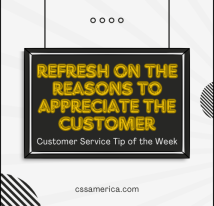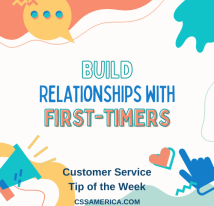
Andrea had worked in human resources for years, and the company decided that it wanted to hire employees who were more customer service-oriented, regardless of the position. After making that decision, they added some creative questions to the interview process.
One of the most interesting questions that Andrea had to ask prospective employees was “Are you selfless?” The answers that she received from applicants often made her either laugh or cry. One response was “Why do ask that? What have you heard about me?” Another response was “Yes I can be selfless. What’s in it for me?”
It’s a tough question to answer if you are not a naturally selfless person. But many people who excel in customer service excel because they are selfless. They are very good at empathizing with others’ situations. They are exceptionally good at trying to do what’s best for the customer or best for the company without focusing on the third option: What is best for me?
People who are selfless try to do things based on others’ needs and issues and goals. And they make decisions based on what’s best for the person they are trying to serve.
Are you selfless?
To take it up a notch in our customer service approach, focus less on ourselves in conversations, and focus more on others.
Signup for FREE Tips! Contact Us More Resources for You Visit Our Home Page















 “I just want to be heard.”
“I just want to be heard.”






